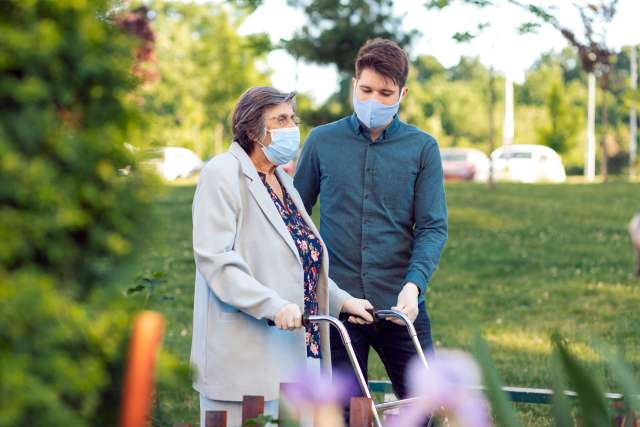Falls are the leading cause of injury among adults ages 65 and over. According to the Centers for Disease Control and Prevention, more than one-in-four older adults fall each year, and 20% of falls result in a serious injury. Despite their frequency, many falls can be prevented. Felicia Chee, MD, a UCLA internist in downtown Los Angeles, and John David Fernandez, MD, a UCLA internist in Beverly Hills, offer information about the causes, consequences and ways to prevent falls among older adults.
Why are older adults at greater risk for falling? “There are multiple causes,” Dr. Chee says. “They include age, underlying health issues, sedentary versus active lifestyle, cognitive abilities and environmental status.” “A major factor inf luencing fall risk is polypharmacy - being prescribed many different kinds of medications for a variety of problems,” Dr. Fernandez adds. “These medications alone or in combination can cause dizziness, drowsiness or confusion.”
What kind of injuries can result when older adults fall? “One of ou r ch ief concer ns is f rac t u res,” Dr. Fernandez says, noting that wrist and hip fractures are most common. More than 95% of hip fractures result from falls. “Head trauma, such as brain bleed or concussion, can also result and be quite serious,” he says. These injuries may start a cascade of events that lead to other health issues, as well as a loss of independence for the patient.
How can falls be prevented? “One of the first things I do is review a patient’s medications to determine which ones contribute to fall risk and if any are no longer necessary,” Dr. Fernandez says. “The patient’s medical history, such as a history of dizziness or weakness, will also inform my decisions.” He instructs his patients to have their vision and hearing checked regularly, and he also checks his older patients for vitamin D deficiency and foot disorders, which are both associated with increased fall risk.
“Exercise is a great way to decrease the risk of falling,” Dr. Chee says. “Look for exercises that help with balance, strengthening and movement, such as Tai Chi.” She may refer patients to see a physical therapist to assess their gait.
Dr. Chee also recommends mitigating environmental risks. “This includes making sure there is good lighting around the home and that stairs all have handrails,” she says. “In the bathroom, install grip bars in the tub or shower and have a bathmat in the tub or a shower chair in the shower.” Additional measures i nc lud e re mov i n g tripping hazards, such as appliance wires and loose rugs, as well as clearing obstacles or clutter from the floor.
“It ’s i mpor ta nt f o r p r i m a r y c a r e physicians to have good relationships with their patients,” Dr. Chee says. “That allows the physician to be familiar with the patent’s baseline health status. It also makes patients more willing to share information, such as having fallen in the past. Having a previous fall puts one at higher risk of subsequent falls.”

